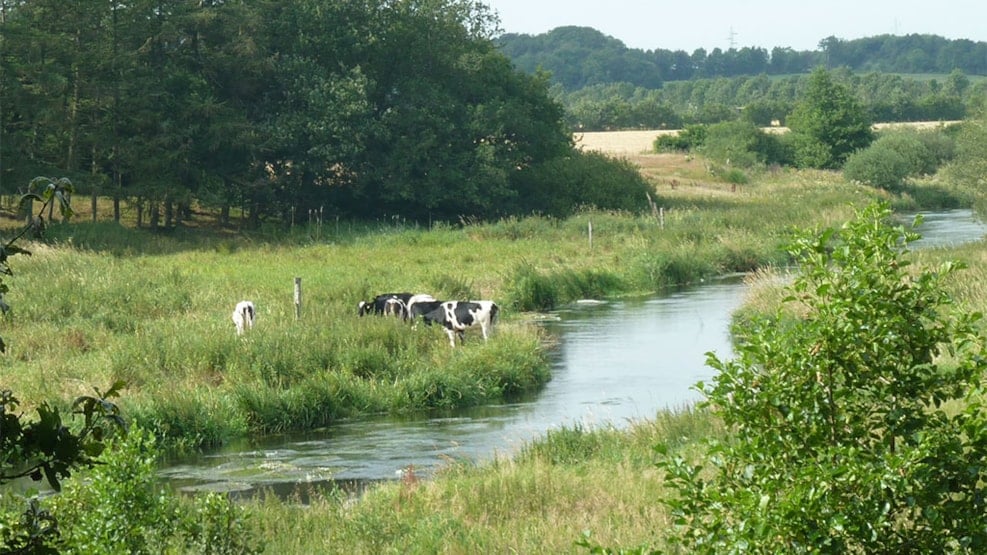
Kongeåen – nature
Kongeåen is a relatively short, 60 km river. The wellspring of the river is located east of Vejen and flows west to the Wadden Sea.
Kongeåen is a relatively short, 60 km river. The wellspring of the river is located east of Vejen and flows west to the Wadden Sea. The river is a popular destination for anglers, offering good opportunities to catch trout and salmon. The nature along the river can be experienced by following the new riverside hiking trail, Kongeåstien. The route opens in the spring of 2015.
Headspring and course
The river of Kongeåen has a large source delta with many tributaries. One of the headsprings can be seen at Gamst Søenge east of Vejen, while others are located west of Vamdrup. Vejen Å is one of the largest tributaries, flowing from Knagemøllen east of Vejen.
Kongeåen is one of the few major Danish rivers that flows into the Wadden Sea. The estuary can be found just northwest of the town of Ribe where the river passes through the sluice of Kongeåslusen. During its course, Kongeåen runs through a relatively wide and flat valley, which has formed over the last two Ice Ages.
Kongeåen is completely unregulated, flowing unhindered. Many other streams in Denmark have been straightened to expand the farmland, so Kongeådalen offers a unique opportunity to see a natural river course. Kongeåen drains an area of about 450 km2, which is less than other Danish rivers due to the middle part of the river basin being relatively narrow.
Conservation and nature
In 1980, the river valley delta of Kongeåen and its meadows and marshlands became subject to nature preservation. Along the river – especially on the south side of the river – there are bogs, wellsprings and acid grassland, which represent three relatively rare kinds of nature in South-Western Jutland.
The river valley of Kongeådalen offers favourable habitats for several species of animals and plants that are otherwise rare in Denmark. Here you can meet the colourful kingfisher, lamprey eels and bright yellow globeflowers. To learn more, watch the video clips of wildlife along the river of Kongeåen: www.vejen.dk/rignatur
Among the wildflowers growing in the river itself are the yellow water lily and the abundantly flowering water crowfoot. Along the riverbanks you find marsh orchids, sneezewort, filipendula and willow herb. Hogweed is also to be found in the old disused water channels.
Formation of the river valley of Kongeådalen
The river valley of Kongeådalen was shaped during the last Ice Age by huge streams of glacial meltwater. At the time, most of Jutland was covered with ice. The glacial rim is still clearly visible today, dividing the hillscapes to the west from the clayey and sandy flatlands to the east. Following the Ice Age, the glaciers shed enormous quantities of meltwater, flowing westward while depositing large amounts of sand and gravel that today make up the Jutland heaths. The watershed was so strong that it cut deep valleys into the landscape through which the river of Kongeåen flows to this day – and you can sense that this valley was once even wider.